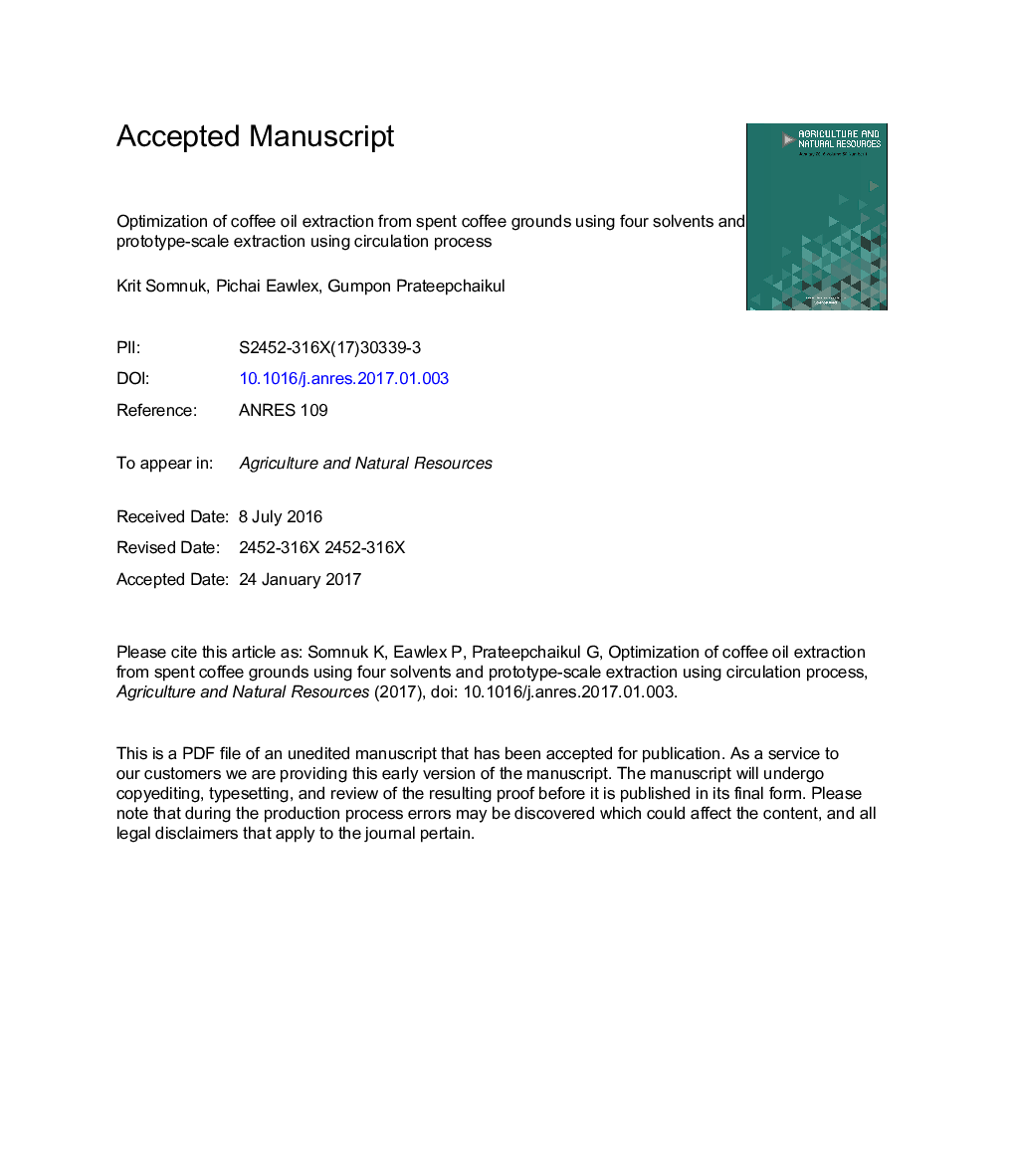| Article ID | Journal | Published Year | Pages | File Type |
|---|---|---|---|---|
| 6538087 | Agriculture and Natural Resources | 2017 | 26 Pages |
Abstract
The optimization of two parameters-espresso coffee oil extraction time and the ratio of dried spent coffee grounds (DSCG)-to-solvent-were conducted on DSCG employing four solvents. Extracted yields were investigated using response surface methodology. The two independent variables-ratio of DSCG-to-solvent (5.1-24.9Â g/g) and extraction time (0.2-39.8Â min)-were optimized in the batch mode. The predicted model was verified using actual experiments. The experimental yields achieved were 14.7 percent by weight (wt%; using hexane), 13.1Â wt% (using anhydrous ethanol), 11.8Â wt% (using hydrous ethanol), and 7.5Â wt% (using methanol). Prototype extraction was tested using a circulation process. Approximately 11.8Â wt% oil yield of prototype extraction could be obtained from DSCG under the optimal conditions of 30.4Â min extraction time and 22.5Â g/g ratio of DSCG-to-hexane from the laboratory-scale results. In this study, the miscella (the solution of coffee oil dissolved in the solvent) from up to six successive extractions was investigated to determine the optimal oil extraction process. The repeated miscella from each successive extraction showed high efficiency and stability of coffee oil yield similar to that obtained using fresh hexane.
Related Topics
Life Sciences
Agricultural and Biological Sciences
Forestry
Authors
Krit Somnuk, Pichai Eawlex, Gumpon Prateepchaikul,
